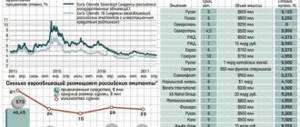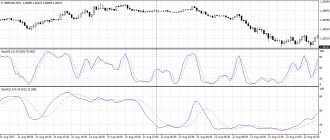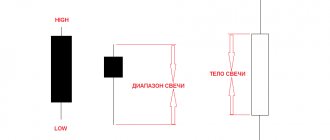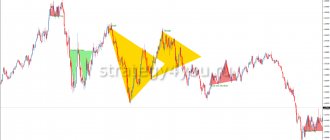Every novice investor hopes that his investments will bring only profit. Obviously, this idea is erroneous, since it is unlikely, one might say, impossible to guess with 100% probability that the asset you have chosen will always increase in price. But there is always a way out - this is the averaging strategy.
The beauty of this technique is that it is extremely simple, but at the same time extremely effective. It is based on a rule based on many years of research of the market and its players, ranging from private traders to the largest investment companies, which states:
no one knows exactly when to enter and exit the market
In a limited period of time, many guess the entry points by buying assets that show simply colossal growth. But even such investors make mistakes in their forecasts over time, when after entering the market, the price turns in the opposite direction and they begin to lose money. Sometimes a lot of money.
It is precisely to level out such situations that the position averaging technique was invented.
The essence of averaging
So let's say we have a price chart. The price goes up, at a certain moment you make a strategic decision to continue the trend. However, for a certain reason, the price begins to go down, not up. Instead of placing a loss (stop order), you open the same deal one level lower to buy, then another one even lower, etc.
That is, you perform averaging within your current position. There will be a separate video lesson about this.
Here, in my opinion, two types of averaging can be distinguished:
- Particularly risky
- Less risky
In general, any averaging beyond your current position is always risky. As a result, the likelihood of losing your money is extremely high.
Tips for using the averaging strategy
Any strategy is effective when it is applied wisely. Thoughtlessly buying stocks when prices are down can lead to investing in a weak company that will never recover from its problems and will leave the exchange as a result of delisting.
Some tips for using the averaging strategy wisely:
- Carry out a step-by-step purchase of not all shares in a row, but only those that are on your list after a thorough fundamental analysis of the issuer. In this case, you are insured against investing in a company that, for objective reasons, is losing capitalization, and not as a result of a general trend in the stock market.
- Use the strategy as part of long-term investing. No one can predict in advance when the fall will end and growth will begin. But the assets of large issuers and blue chips will grow over the next 10 years or more, so there will definitely be a profit from using the strategy.
- Never use leverage to buy stocks. The correction may take more than one month, and all this time you will be forced to pay interest for using the broker’s money or close the position at a loss.
- Do not use the martingale system or do it only with part of the capital, which you do not mind saying goodbye to in advance.
- Always have a nest egg for periods of crisis to take advantage of the moment and purchase assets at low prices.
About increasing volume
Many people add volume with each new averaging position. That is, on the first trade you had 0.01 lots, then 0.02, 0.04, 0.08, etc.
In such conditions it is easy to guess that a drain will be inevitable; when it happens, only God knows. But if you use the same amount of volume, say 0.01 lot, on all positions, the likelihood of a drain will decrease.
Main
- Investments require time to immerse themselves in the topic; past performance does not guarantee future returns.
- It is important to make informed financial decisions, invest regularly, and use an averaging strategy to protect yourself from market fluctuations.
- Averaging has an effect over a long-term investment horizon. For example, from the year.
- It is important to remember that averaging does not guarantee the absence of losses and is not a prerequisite for achieving profitability in investments. All other things being equal, this strategy allows you to increase potential income, as well as reduce possible losses.
How most traders lose money
There is a certain price. It increases or decreases in steps of 10. With each step, the trader places a buy order.
There is even such a thing as the “Averaging Grid”. Using a grid, sell and buy orders are placed at a certain place above and below. As a result, you can make good money. However, the probability of losing all your money in this case is extremely high, since this trading method is very risky.
The more the price moves down with open buy orders, the more volume you will have, so in the event of a price reversal, you will be in an advantageous position with huge volume. And this way you will earn a lot of money. But do not forget that the main condition is a price reversal for such a development of events. Therefore, most often the deposit fails.
As a result of all this, there is a constant struggle between the market and your deposit. Here only God knows when you will lose your deposit, and whether you will lose it at all.
It's something like a casino. Hit or miss. From practice, I can say that most traders still lose their deposits rather than earn money.
The greater your volume, the more likely it is that your trading account will be drained.
The shorter the distance to the nearest order, the greater the likelihood of a drain.
This is what I told you. Suppose the price moves somehow and every two points you place a buy order. Only God knows when you will withdraw your deposit, but one thing is clear: someday it will happen and, most likely, very quickly.
There are situations in the market when you cannot place a stop order or cannot take losses. For example, you are cheating with an investor or you don’t want to show the investor that you are a loser trader, or you want to make a statement and then scam these suckers.
The influence of leverage on the size of the averaging position
On the Russian stock market, large leverage is usually not provided. Many brokers do not provide it at all. You can check your leverage size in your terminal. For example, the Aton broker does not provide leverage higher than the first. Therefore, we are unlikely to be able to buy much more and nothing very catastrophic will happen to our deposit. The main thing is to close the position at a certain moment and not sit out the loss. In the FORTS market they provide much greater leverage. On Forex, in one such averaging, you can lose your entire deposit very quickly if the instrument does not turn in our direction.
With such approaches and without risk control, averaging is a road to nowhere! It will definitely ruin your deposit. Can averaging be useful at all? There is only one way when such an approach takes place, and I will briefly talk about this now.
Different situations and what to do in them?
Situations, as you understand, can be different and extraordinary. What to do in this case? Firstly, under no circumstances should you place orders in terms of mathematics and the number of certain points. You need to be attached to the logic and mechanics of the market. I am not the inventor of this method, I was taught it the same way at one time, and, in general, this is how it works.
Many stock speculators and tycoons work this way. True, the crisis in 2008 showed that it does not always work, and yet bankers jumped from windows.
Let's assume that, just as in the previous example, at the top point of the price movement, you open a buy deal. For one reason or another, you did not want to cover the loss. What to do next? You need to find some very powerful and bright level. This level should not be from five minutes, but AT LEAST from four hours. I’m not talking about weeks, because you are unlikely to find him there, you will have to wait for a very long time.
Excel spreadsheet for calculating knee risk averaging
Download link - file for calculating knees averaging + formula for calculating the cost of a point
Formula for calculating pip value
This value is calculated using the formula:
PointValue = (ContractSize * (Price + PointStep)) - (ContractSize * Price)
Using the EURUSD pair as an example, we can calculate that: PointValue EURUSD =(100,000 (size of 1 contract)*(1.1090(current price)+0.0001(minimum change in quote)-(100,000*1.1090)=10 USD price of one point .
Using WTI oil as an example, we can calculate that: PointValue WTI =(10(contract size)*(62.40(current price)+0.01(minimum change in quote)-(10*62.4)=62.41 -62.4=0.1USD (10 cents) price of one point.
Use iron levels for averaging.
That is, you need a level from which there will 100% be some kind of reversal. You need what is called an iron level. I have a separate video and even a free lecture on how to find such levels.
Suppose you find such a level. You must open a position with the same volume as you opened it for the first time in the same direction - up.
As you understand, with a high probability the market may go up after this. Thus, somewhere in the area shown above, taking into account swaps and spreads, you will end up at zero.
Thus, you didn’t even lose anything, although using stop orders you would not have avoided losses. In my example, you broke even, made a statement, and with this statement you can go around and look for suckers for your investment. Sorry for being rude, I just don’t understand people who don’t cover their losses. That is, I don’t understand situations when it is impossible to close a loss.
ALWAYS cover your losses, averaging is not the solution!
What is it for? Only for fraud, in my opinion. If you trade for yourself, then I can say that I have not seen a single trader who does not cover losses. When it is necessary to accelerate and boost the deposit, averaging is applied through a certain equal number of points. Then you can really increase your deposit by an incredible amount of interest.
But you need to understand that everything here, for the most part, depends on luck. Not from the market, but from luck. I repeat once again: this is something like a casino. This way you will break even and everyone will be happy. It is this averaging that is considered normal averaging. Everything else is high-risk nonsense and should not be used.
In particular, do not use any mesh systems, regardless of what they are specifically based on. That is, you can bet multipliers and use Martingale. You can constantly experiment with a certain number of points. But no matter how you use this averaging method, it will not work for you if you do not link it to the logic of the market.
The logic of the market is an iron thing. It works on any market, on any asset, and it worked even under Tsar Peas. Right now you can open your trading terminal and make sure that the market logic still works to this day.
But when you open positions depending on the number of points passed by the price, this can give some short-term results. If you have been testing various advisors based on averaging, you have most likely encountered this. Statistically, you may see growth for a few years, and then a few years later you see a sharp decline.
Many people don’t think about it and think that they are the ones who will be lucky. However, you need to understand that market volatility contracts and expands depending on time, season, year, economic situation, and so on.
Constancy of contributions when investing
The basic rule of investing is “buy low, sell high!” And although it looks quite simple at first glance, not all investors are able to stick to it.
When there is a price collapse on the market and quotes drop by several tens of percent, or even 2-3 times, it would seem that this is the best time to buy cheaper shares. But it is at this moment that most people are paralyzed by fear, what if prices fall further and seemingly cheap shares purchased now will in fact be considered expensive in a couple of months, after the fall continues.
In order to successfully invest money, you need only two things: choose the right entry time and choose the right shares to buy. The problem is that almost no one succeeds in this over the long term.
The average cost strategy helps solve all these problems and make a profit in the long term. There is no need to constantly look for moments to enter the market, fear that prices will fall even more or that the current price is too high to buy. All that is required of you is to buy assets at regular intervals for a certain amount.
It is the regularity of contributions that determines the effectiveness (and profitability) of the strategy. Regardless of whether the market is up, down, or treading water, buy regularly. At an expensive price, at a cheap price. Doesn't matter. If the price goes up, you can buy fewer shares; if the price goes down, you will get more shares for the same amount.
The market is constantly changing!
For example, the volumes on the Russian exchange were different before the situation with the DPR, LER, Crimea, sanctions and other things occurred. Now the volumes are very different. The volatility of candles is completely different.
There is a concept of average movement for intraday prices. The average intraday price movement is now also different from what it was three years or even a year ago.
Moreover, I can’t even say whether it will be the same next year or not. For me this is the unknown, and I don’t know it. This is why, based on some math, on some number of points, you will most likely lose money.
Based only on levels. A level is an iron thing that has worked, works and will work. The market, in principle, cannot exist without this, because behind the levels lies the mechanics, there is a certain wholesale base where large players, traders and other market participants make decisions. As a result of these decisions, the price of the asset goes in one direction or another.
Cost averaging strategy using the Edlson method
In addition to the classic averaging strategy, investors successfully use the Edlson method. Its essence is as follows:
- Set the target investment amount. For example, in a year I want to invest 120,000 rubles in the securities of some company.
- We set the target value of the monthly portfolio. Let’s say that in the 1st month it should be 10,000 rubles, in the 2nd month – 20,000 rubles. So until we reach 120,000 rubles.
- If the actual portfolio value is below the target value in the current month, we buy shares. If higher or equal, no.
- This continues until the 120,000 rubles previously allocated for investments are exhausted. This may happen in 12 months or less.
Edlson's method gives better results compared to the classical scheme and the scheme of a one-time purchase of securities for the entire amount.
If the market doesn't go up
Well, what to do if the market went down and went up, as in my example? Here you can accept that you have lost something, or think about how to increase the lot, but this will already be a martingale. It all depends on where the next nearest major level will be. If he is somewhere nearby, then you can open another position. Approximately as shown in the figure below.
If the next major level is far away, you need to change the lot multiplier. Since on the first position you get a profit and loss of 2.5, on the second position it is already 7.5. That is, as you understand, the greater the price fluctuations, the more the noose around your neck will tighten. Therefore, in this case, you will have to use a lot multiplier. And this will lead you to losses.
Because of this, do not use averaging unless there is some situation that simply requires it. If you already have a situation where everything is bad, please use it, but be guided by the levels.
How everything works in practice
To clearly demonstrate this to you, I will show you this on the real market in the TigerTrade player. As you can see, the market opened at the bottom for me, and I assume that it will go up for me.
I opened a buy order. We see that the price continues to go down. Of course, my loss on my trading account is growing.
Suppose here I set a certain level for some of my reasons, based on the analysis of daily charts, etc.
I assume that from this level the price will rebound, after which it will move up. Now, as you can see, I have two buy positions, one of which is above the other.
Now the market has moved up, and we are at the same point where we initially opened the position, or maybe a little below it.
At the same time, please note: we are in the black. This is only due to the fact that we opened a deal at these points.
This example is, of course, very exaggerated on the player. However, there are other situations. I open another buy deal, and we see that the price has approached the level I set.
It happens. Here I will also make a buy deal. Now I have two open orders. The green line indicates the approximate price position for us to break even.
However, as you understand, the market is going even lower and at the same time the loss on my account is growing with incredible speed. Of course, being at the point indicated in the figure,
You need to think about your actions because if we open a buy order now, the price will have to travel a huge distance to bring you to zero. The price path should be more than 50% and it is unlikely that it will go that far.
You can add a lot multiplier. Only in this case it will be a martingale, and you will suffer huge losses.
Why does position averaging work best in Forex?
The whole secret is in the “nature” of the foreign exchange market. Its pricing is 80% dependent on the decisions of large banks and 20% on speculative transactions. Each country is fighting for the strength of its currency. It is not beneficial for anyone to have a weak national currency, but there will still be losers in this fight.
However, for a trader, the opposition of different national currencies plays into each other’s hands. Thanks to this confrontation, price corridors are created in which you can make money.
And despite the fact that banks find it difficult to adhere to the golden mean, they will still try to regulate pricing using their leverage. Firstly, this confrontation cannot be stopped, and secondly, it has a beneficial effect on the country’s economy.
Levers of influence on the value of the national currency:
- Control of the credit rate - at a low rate the currency weakens, at a high rate it gains strength.
- Buying or selling national currency - also affects pricing. Most often, investors use “buyback” of national currency. currencies for short-term investments.
- Unexpected statements by officials about changes in monetary policy are designed mainly for a short-term effect. Panic among speculators can seriously change the value of a currency.
Traders can only catch the deviation from the average values and use this effect in their trading.
What to do if the price is far from your orders?
I don’t know what to do specifically in your case, since everything will depend on the level located near the opening point of your transactions and on the current price for your asset.
I will say in fact that, being in the situation I demonstrated, it is very difficult to get out of such averaging. It is better not to allow this to happen on your trading account, otherwise a drain will be guaranteed. I warned you.
Artyom and the Smart Investor channel were with you. Subscribe to the channel. You will find all useful links in the description. Earn money! When you earn money, don’t forget to share it with old Zvezdin. Good luck!
Should an investor average?
The averaging method, despite all its shortcomings, can be a good way to make money. Those who approach the crisis with a lot of cash can exploit the situation in two ways:
- reduce the break-even point to increase profits when selling after the market recovers;
- reduce the average purchase price of shares in order to increase exchange rate income and the level of dividend yield.
I also recommend reading:
Why are SPACs needed?
SPAC companies or how to get to the stock exchange through the back door
The main thing that an investor should avoid when trying to apply the averaging method is haste. The interactive chart of the Moscow Exchange index for the first three months of 2021 shows: those who began to act in February became victims of their haste.
Of course, we can never say with certainty whether we have reached the bottom or not yet, being in a drawdown. Therefore, you should follow three simple rules:
- Never spend your entire financial reserve at once. Always leave money in case the quotes drop even lower. It is also necessary to remember the integrity of the airbag.
- Buy only reliable companies that are guaranteed to survive the crisis. For example, choose players with state participation or large private companies with a stable cash flow.
- Do not allow a strong dominance of any security in the portfolio. Attempts to average positions can lead to distortion and disrupt the planned proportions of diversification.











